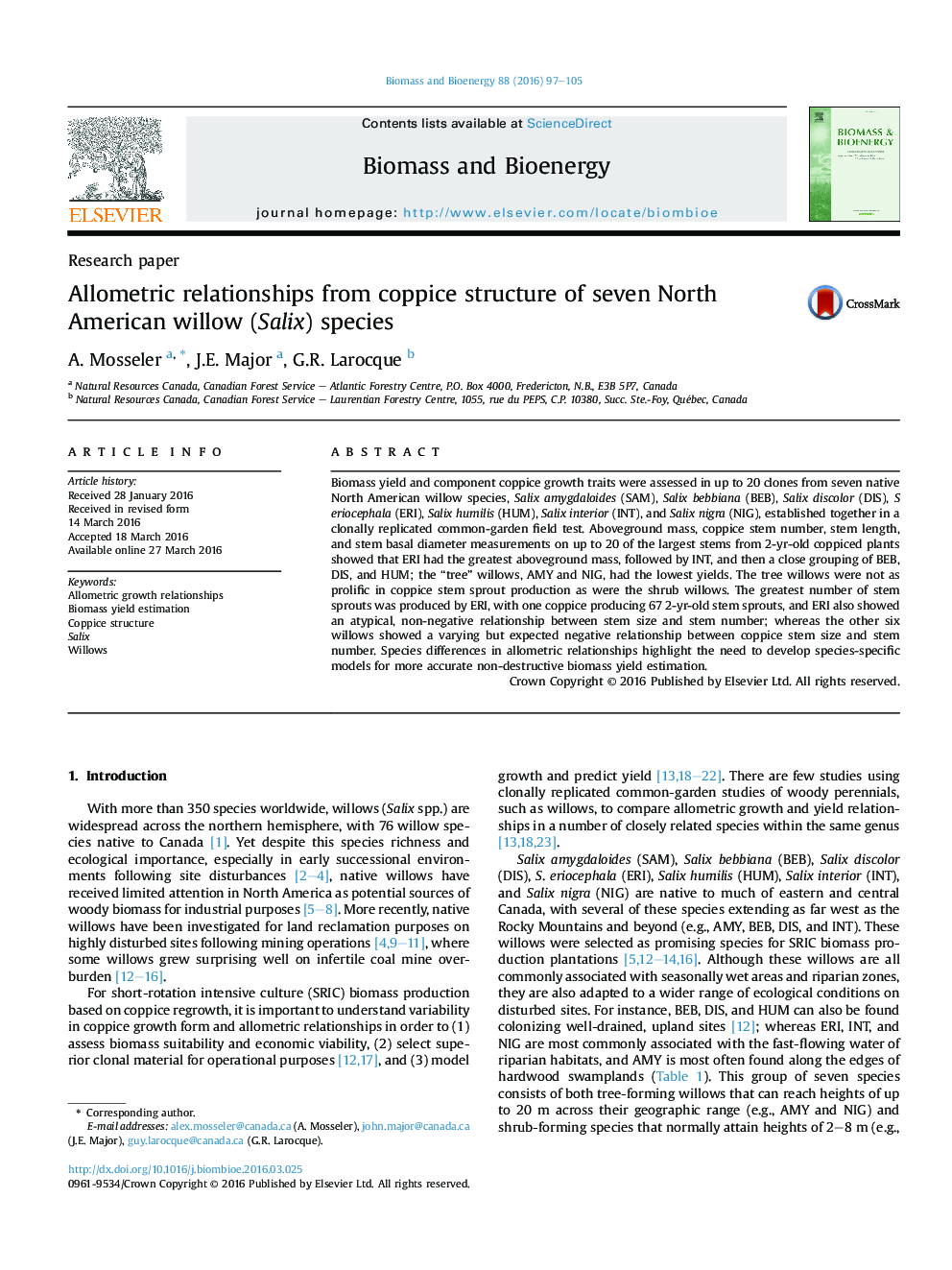| Article ID | Journal | Published Year | Pages | File Type |
|---|---|---|---|---|
| 7063348 | Biomass and Bioenergy | 2016 | 9 Pages |
Abstract
Biomass yield and component coppice growth traits were assessed in up to 20 clones from seven native North American willow species, Salix amygdaloides (SAM), Salix bebbiana (BEB), Salix discolor (DIS), S eriocephala (ERI), Salix humilis (HUM), Salix interior (INT), and Salix nigra (NIG), established together in a clonally replicated common-garden field test. Aboveground mass, coppice stem number, stem length, and stem basal diameter measurements on up to 20 of the largest stems from 2-yr-old coppiced plants showed that ERI had the greatest aboveground mass, followed by INT, and then a close grouping of BEB, DIS, and HUM; the “tree” willows, AMY and NIG, had the lowest yields. The tree willows were not as prolific in coppice stem sprout production as were the shrub willows. The greatest number of stem sprouts was produced by ERI, with one coppice producing 67 2-yr-old stem sprouts, and ERI also showed an atypical, non-negative relationship between stem size and stem number; whereas the other six willows showed a varying but expected negative relationship between coppice stem size and stem number. Species differences in allometric relationships highlight the need to develop species-specific models for more accurate non-destructive biomass yield estimation.
Related Topics
Physical Sciences and Engineering
Chemical Engineering
Process Chemistry and Technology
Authors
A. Mosseler, J.E. Major, G.R. Larocque,
